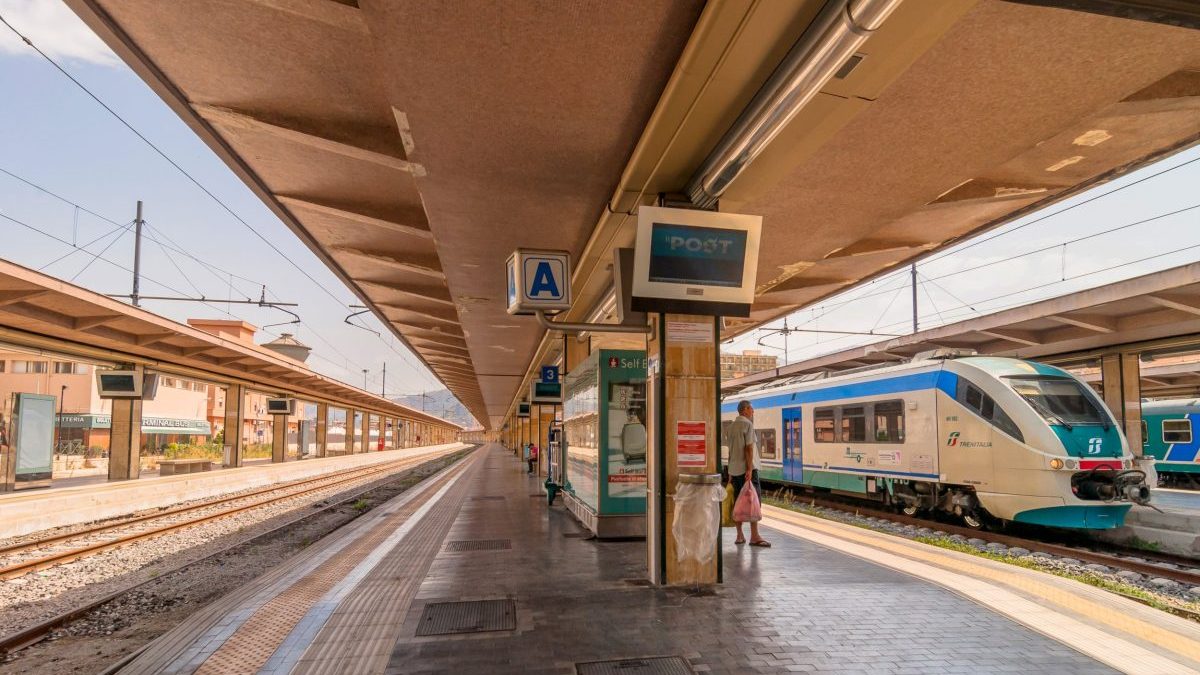An expanding network, more trains and higher demand mean that exploring Europe without flying is getting much easier
Rail holidays are becoming more popular. The number of people taking flight-free trips with travel firm Byway grew by 66 per cent in 2024, while Italian tour operator Citalia saw rail holiday bookings increase by 405 per cent in the year to February 2025.
The trend is underpinned by the renaissance of sleeper trains, demand for transport with a lower carbon cost and the growth of fast services. Europe’s high-speed rail network – designed for speeds of 250km per hour – grew by 47 per cent between 2013 and 2023.
Among the recent additions is a direct InterCity Express train that links Paris and Berlin in less than eight hours, a new high-speed daytime link from Amsterdam to Stuttgart and Munich and the resumption of the high-speed services between Paris and Milan and Paris and Turin after a two-year hiatus to the route following a landslide.
There is, of course, an extra hurdle for no-fly holidays to Europe when beginning in the UK, where Eurostar has the cross-Channel monopoly. But at least three operators are vying to rival the incumbent, teasing the idea of direct services to destinations as far flung as Geneva, Milan and Zurich.
Those launches may be years in the making. Yet travelling between European destinations by rail is already faster than you might expect. For those who fancy a no-fly break that goes beyond Eurostar hubs, we’ve found six options that include at least one other high-speed service.
Each trip below could feasibly be completed in a week, including return travel from the UK and time to enjoy the destinations.
Lake Geneva, Switzerland
With just one change of train in Paris, it is easy to speed to the shores of Lake Geneva in a day. Lyria (the Franco-Swiss high-speed rail operator) has trains from Paris direct to the Olympic city of Lausanne, which is a fine base, but take our tip and make for one of the secluded villages in the Lavaux vineyards. These communities nudge up to the eastern boundary of Lausanne.
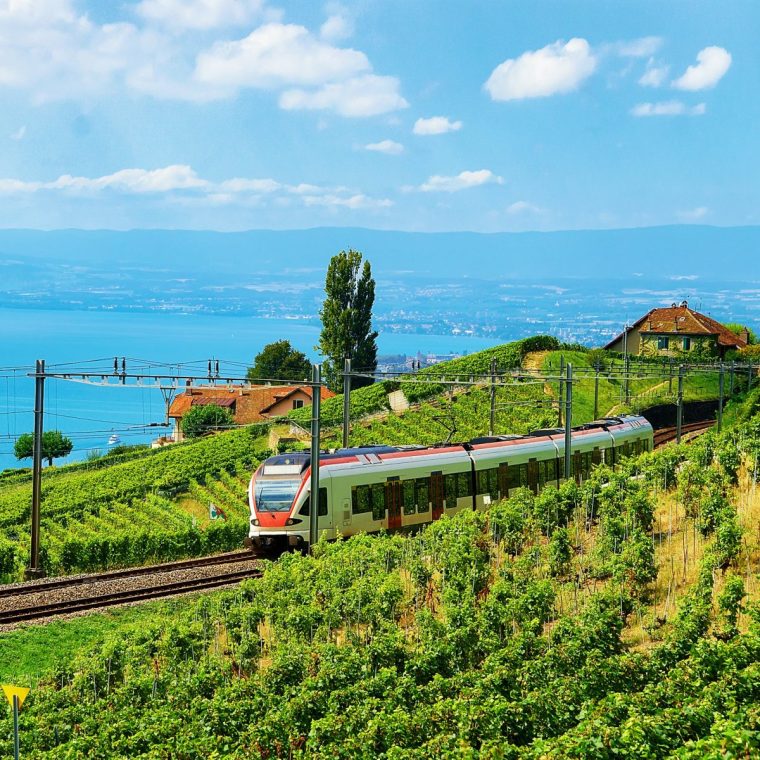 The railway runs through the Lavaux vineyards on Lake Geneva (Photo: Roman Babakin/Getty Images)
The railway runs through the Lavaux vineyards on Lake Geneva (Photo: Roman Babakin/Getty Images)
A favourite is Grandvaux (10 minutes from Lausanne on the S-Bahn). Three-star hotel Auberge de la Gare is right by the station with doubles from SFr215 (£195) per night. Its Michelin-listed restaurant includes a terrace that looks out to Lake Geneva. Expect simple, well-made dishes such as perch with French fries. This base in the Unesco-listed Lavaux vineyards is ideal for following marked trails through the terraces.
The hotel offers free passes for use on public transport in the area, allowing day trips to Lausanne and Montreux.
Wednesday and Saturdays bring the town centre market to Lausanne, which has more than 100 stalls stocked with produce from the area. They include cheese-on-wheels outfit Les Petites Fromagères, selling more than 80 varieties, and freshly baked bread or pain au chocolat from Cave à Levain.
Montreux’s attractions include a two-week jazz festival in July, a cog railway that offers views of the Swiss and French alps (£35pp) and nearby turreted Château Chillon, dating to the 12th century. Lord Byron’s visit to the castle in 1816 inspired his poem “The Prisoner of Chillion”.
Aix en Provence, France
The southern city of Aix-en-Provence, where market squares crowded by tall, ochre buildings fan out to chic shopping streets, is a convenient base from which to see the region’s lavender fields. Terre Ugo, a family farm around 10 minutes from the city by bus, is best visited in July when the crop is most vibrant.
Aix itself is a place for lazy summer days spent people-watching with a glass of rosé over provençale cuisine at a cafe on Cours Mirabeau. Try family-run Licandro Le Bistro for langoustines, lobster and shellfish bouillabaisse or bacon-wrapped scallops and lemon tart at Le Vintrépide, a small restaurant in the old town.
Starting with the Eurostar to Lille, it is still possible to leave London at 11.04am and arrive at Aix’s modern TGV station at 6.31pm, with high-speed services from Lille to Aix taking around four hours.
From there, it’s just a short hop by shuttle bus into town where those looking for a touch of luxury head straight for the Hôtel Le Piggonet. The 18th-century villa has a huge, landscaped garden filled with water features and hidden corners, 10 minutes’ walk from the city centre. Doubles from £180 per night in low season.
In high summer, a more affordable alternative is the Hôtel Rotonde, equally well-placed for exploring the city. Rent bikes for out-of-town excursions through the landscapes so celebrated in the art of Paul Cézanne, who was born in Aix.
Sicily
Sicily can be reached in just 24 hours by train and ferry from London. It’s a speedy dash with some tight connections, relying on a high-speed, overnight train from Rome to Calabria.
But there are more leisurely ways to reach Italy’s far south by rail. The journey has been made smoother by the restoration of fast trains from Paris to Turin and Milan (operated by TGV InOui and Frecciarossa).
Travel from London via Paris to Turin, continuing south the following morning on a Frecciarossa train. This 10-hour ride from Turin to Calabria is pure theatre, taking in a fine sweep of Italian landscapes, passing through nine cities, and culminating in an afternoon ride along the Tyrrhenian coast.
It reaches the Calabrian port city of Villa San Giovanni in time to take a hydrofoil over to Sicily.
The largest island in the Mediterranean offers golden beaches, Roman ruins, atmospheric seaside cities and a rugged interior of hilltop villages, vineyards and Mount Etna. There’s enough to fill at least a fortnight.
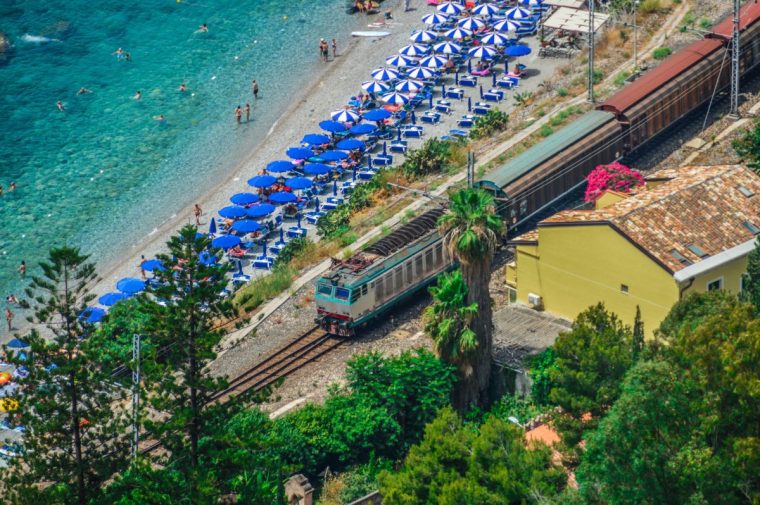 It’s possible to reach Taormina in Sicily in less than 24 hours by train from the UK (Photo: Starcevic/Getty Images)
It’s possible to reach Taormina in Sicily in less than 24 hours by train from the UK (Photo: Starcevic/Getty Images)
For a shorter stint, Taormina is just 40 minutes from the port of Messina by train. Here, a long weekend can be filled at Isola Bella nature reserve, a small, uninhabited island (take a cable car to Mazzarò beach from the city centre, before a short walk to the island), admiring Mount Etna from the steps of the Greek theatre, then joining a hike on the volcano.
Hotel Villa Angela is a boutique property above the town centre with doubles from £170.
Southern France and Andalucia
Most major Spanish cities can be reached with just one overnight stop from London. I find French night trains are best avoided, so why not opt for an overnight stop in Nîmes?
The capital of France’s Gard department can be reached by TGV services from Paris in three hours. It has a Unesco-protected Roman temple, a medieval old town and market halls that are chock-full of independent sellers and open every day of the year.
The four-star Hôtel Marquis de la Baume is just north of the cathedral and doubles start from £75.
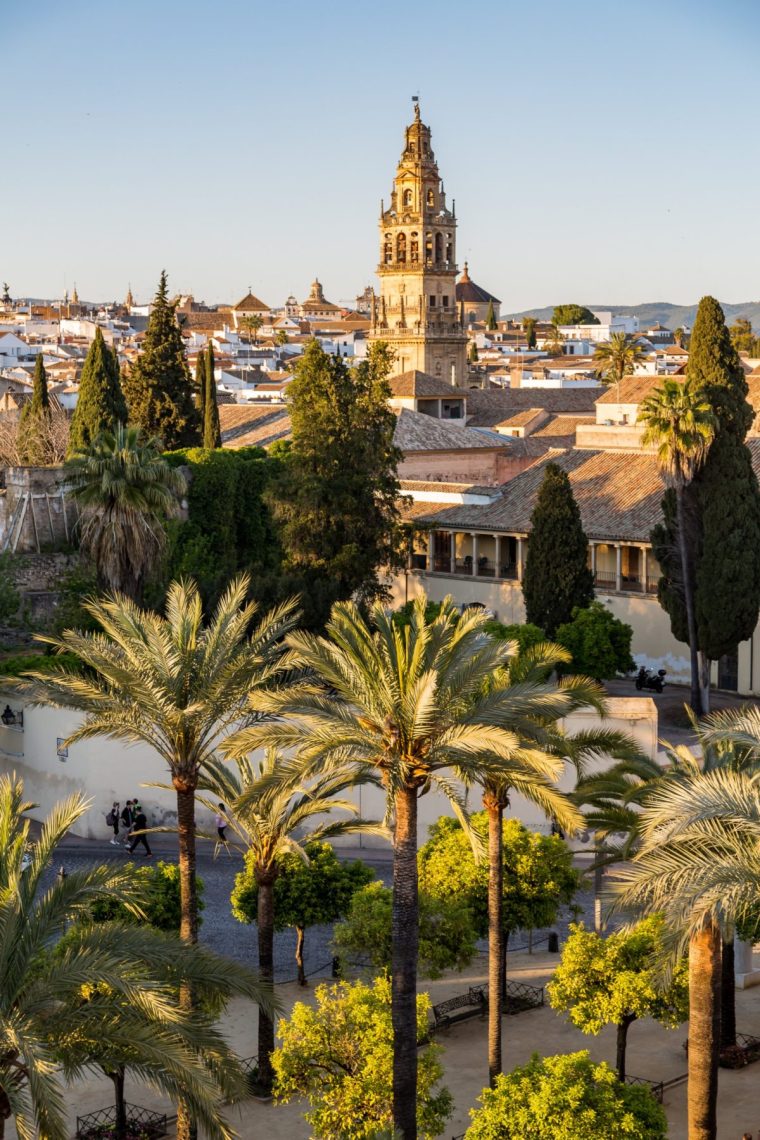 Go city hopping across France and Spain to end in Cordoba (Photo: Santiago Urquijo/Getty Images)
Go city hopping across France and Spain to end in Cordoba (Photo: Santiago Urquijo/Getty Images)
The next morning, join a Spanish AVE train for a fast ride (six hours 50 mins) to Madrid with plenty of same-day connections on to Córdoba, Seville and Málaga.
From Madrid, it’s just less than two hours to Córdoba, one of Spain’s most architecturally striking cities. Take in the striped arches of its mosque-cathedral, wander the cobbled streets of its 12th-century Jewish quarter and see the sun set from the Roman bridge that connects the city’s east and west over the Guadalquivir River.
Hotel Córdoba Center is a 10-minute walk from the train station and has a rooftop pool. Doubles from £90.
The mountains of Austrian Tyrol
With an early Eurostar from London, it is possible to reach Austria’s Tyrol region within a day, changing stations in Paris (Gare du Nord to Gare de Lyon) then catching a Lyria (the Franco-Swiss high-speed rail operator) to Zürich.
From Zürich, catch a connection to Innsbruck. En route, the train passes the shores of Zurichsee and Walensee, slips through diminutive Liechtenstein and Austria’s Vorarlberg region and then follows the Arlberg Railway – the main line between Switzerland and Austria, 4,298 feet above sea level at its highest point.
Here, sit on the right-hand side for the best views of the Arlberg Pass. The railway hugs the valley, before passing through the 10km Arlberg tunnel then descending to Innsbruck.
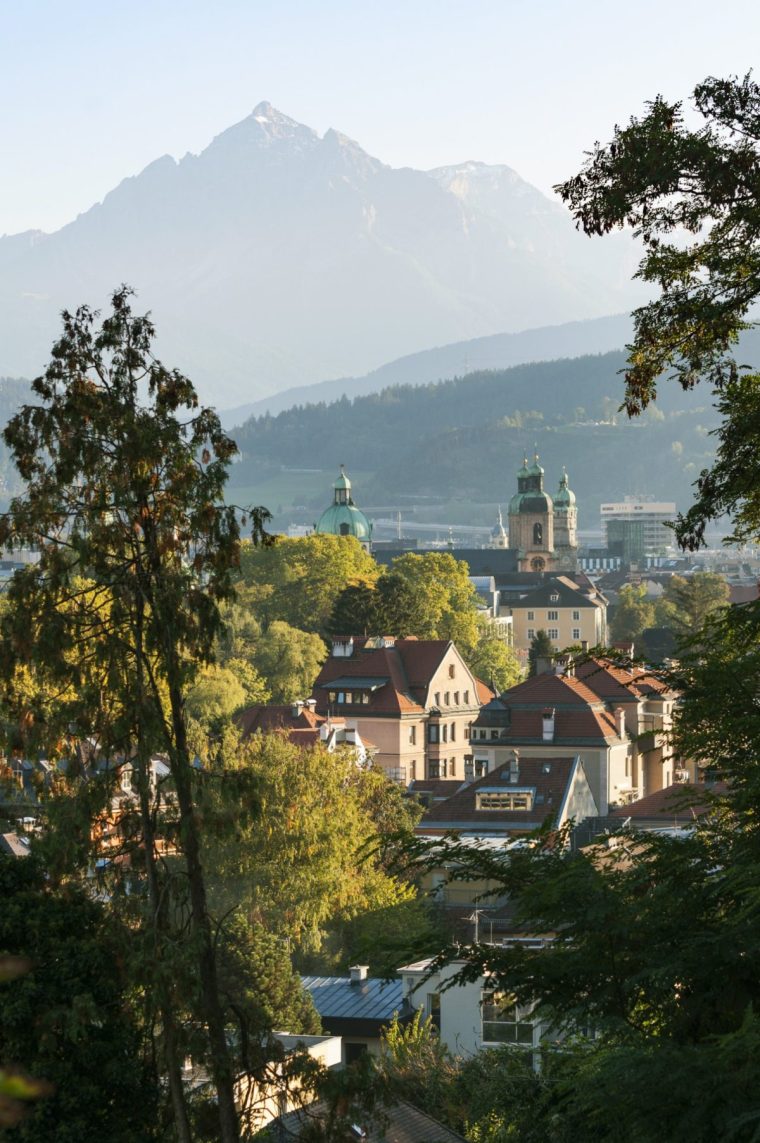 Innsbruck is the capital of Austrian Tyrol (Photo: Elk III/Getty Images)
Innsbruck is the capital of Austrian Tyrol (Photo: Elk III/Getty Images)
The Alpine city and capital of the state of Tyrol is glorious in summer with greenery, snow-dusted peaks and a mild climate that tends to peak at 30°C.
Stay at the edge of Innsbruck’s old town at Nala Individuellhotel with a mountain-view terrace on which to enjoy an early morning coffee or post-sightseeing cocktail (doubles from £100).
There are plenty of hikes accessible from the city. The 7km Zirbenweg Trail, for example, runs between two cable car stations, through pine forest, past the Patscherkofel Alpine Garden (the highest botanical garden in Austria) and to Boscheben, a guest house that overlooks the Viggartal Valley and serves hearty lunches, such as bacon and cheese dumplings. In early summer, alpine roses decorate the route.
Eastern France
The places highlighted so far rely on high-speed rail links to distant cities to which many travellers from Britain would normally think first of flying.
But it is not compulsory to travel so far. Alsace (now part of France’s Grand Est region), for example, is just six hours by rail from London, catching the Eurostar to Paris then a TGV from Gare de l’Est to Strasbourg. Hotel de l’Europe by HappyCulture is an affordable, four-star property in Petite France with doubles from £67.
The city has 600km of cycle trails, taking in the half-timbered houses of Petite France and the imposing covered bridges that span the River Ill and stretching to the Urban Nature Park, which is criss-crossed by waterways.
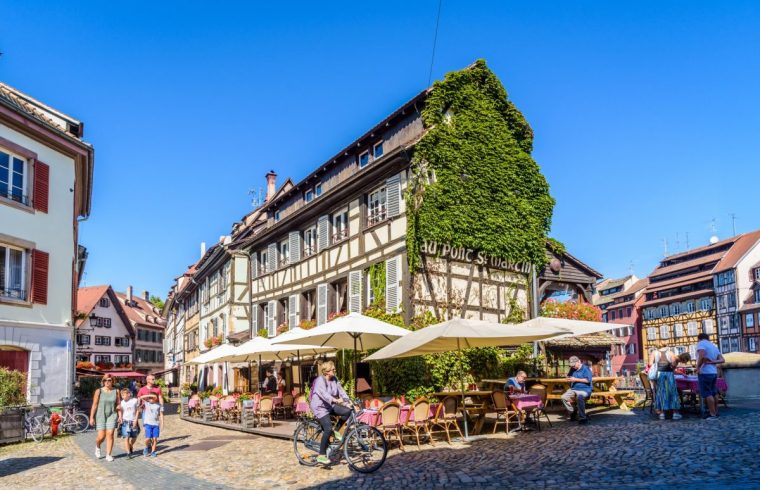 The half-timbered houses of Petite France in Strasbourg are easy to reach by train (Photo: olrat/Getty Images)
The half-timbered houses of Petite France in Strasbourg are easy to reach by train (Photo: olrat/Getty Images)
For day trips from Strasbourg, there are plenty of options that can be reached by public transport. It’s just 30 minutes by train to the city of Colmar with its pastel-painted canal-side houses, Gothic 13th-century church and wine bars stocked with the region’s produce.
Obernai is around 40 minutes from Strasbourg by train. It’s on the Alsace wine route and is part of Plus Beaux Détours de France, an association that celebrates small towns with underappreciated tourist appeal.
